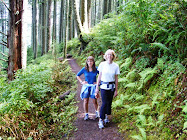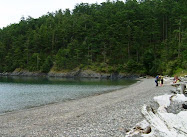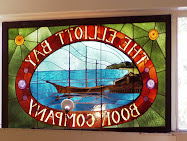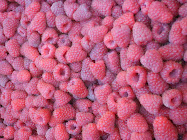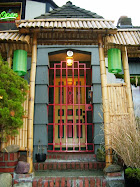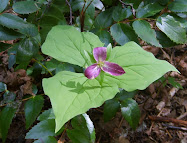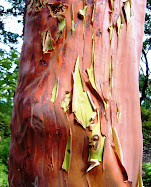 |
| Having a blast skiing ungroomed fresh snow in Tye Bowl |
Last Friday I met some friends from Wenatchee at Stevens, my first trip there in several years. It was snowing like crazy, with about 7 inches of new snow and more coming down all day and filling in our tracks.
At about 1,000 feet higher than Snoqualmie Pass, Stevens generally gets more snow than Crystal and Snoqualmie, although not quite as much as Mount Baker to the north. But the point is, Stevens usually has plenty of snow. And if this season is like many years past, some of our biggest snowstorms will blanket the slopes in March.
I like to start my ski day with a mellow warm-up run, but my friends Linda and Don headed straight to black diamond runs on the back side of the mountain (Mill Valley). All that fresh snow, fluffy and light, needed to be explored and enjoyed before too many others followed suit.
So we whooped and glided and charged down through clusters of snow-coated fir trees and glades layered with pillowy soft snow (in Polaris Bowl, then the open Andromeda Face). Very fun. On the lift rides up, our hoods went up but the nonstop snow didn't dampen our smiles.
 |
| Riding the Southern Cross chairlift |
 | |
| Wide open Tye Bowl, all to ourselves |
 | |
| A quick stop before heading down through the forest below |
After lunch, we made our way up to the top of Seventh Heaven, gateway to the most expert terrain on the mountain. This short double chairlift is always a scary, steep little ride up. Never want to be evacuated off that chair!
To avoid having to go all the way down to the base after our first ride, Don suggests we hike up immediately to the right after offloading the chair. It's a short hike to pretty steep terrain, and we find some sweet, untracked snow directly beneath the lift on Bobby Chute.
On this classic Cascade snow day, visibility is poor at the top as we head down Rock Garden. "I feel like I'm skiing by Braille," I complain. The foggy new goggles don't help.
But the snow is light and oh-so sliceable.
 | ||
| Skiing down Rock Garden off Seventh Heaven lift |
I like the old Pacific Northwest vibe I feel at Stevens Pass. This ski area has been operating in some fashion for 75 years, and I sense the history when I'm there. Are you a Stevens Pass skier? Any favorite, off-the-beaten path runs you care to divulge?
When You Go
Stevens Pass is about 80 miles east of Seattle on US Highway 2, a scenic drive past rapids on the Skykomish River and craggy Mount Index. From Wenatchee, the drive is 58 miles up Highway 2. Stevens is open at 9 am seven days a week during the season, with night skiing until 10 pm on Friday and Saturday nights after March 3. Day adult lift tickets are $65. Big kudos to Stevens for recently being rated the #2 best ski area in the USA for environmental stewardship and sustainable and green practices. And thanks to my friend Linda for taking a few of the shots on this post (of me in the red parka).








.jpg)



















































